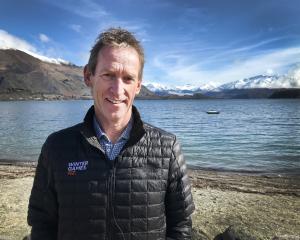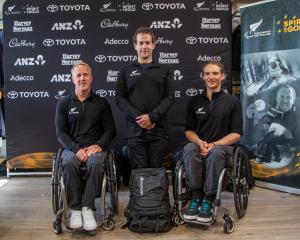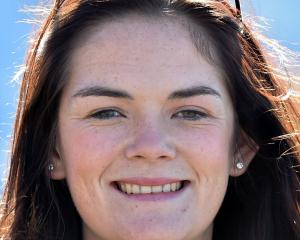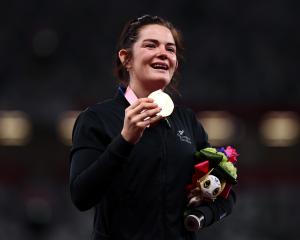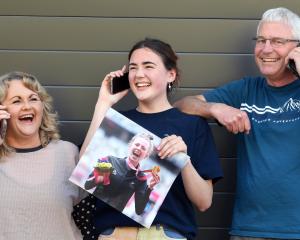
Young female athletes are being pushed to look like a stereotype, the ideal physique for their sport.
Power-to-weight ratios, skin-fold checks and regular weigh-ins are just some of the ways athletes receive the message that being thin is a necessary part of their success story.

McBride, who retired earlier this year, is using her story to help others in the sporting world. She has now started a podcast on mental health called Be Right There to ‘‘spread awareness to mental health and encourage conversation’’.
In her time as a lightweight rower, her victories came at a high price. Her health suffered, both mentally and physically, and she developed an eating disorder.
Part of her job was to make weight for race day. McBride had to weigh 57kg even to make it to the start line because she competed in the lightweight category.
She felt overwhelming pressures to perform, receive medals and improve each year, all while maintaining a small frame.
This led her to a battle with RED-S (relative energy deficiency in sport), a condition in which the energy put out through exercise overrides the energy restored to the body through nutrition, and caused her to lose her menstrual cycle.
‘‘My coping strategy for the pressure was to be in control,’’ she said.
McBride followed a strict eating plan; her focus began to shift from her performance to her food intake.
‘‘I started dieting a lot harder to try and be at my race weight all year round.’’
From the age of 13, when she started rowing, talk about power-to-weight ratios and racing weight was thrown around.
She wished she had been told it was possible to have an eating disorder as an athlete, because subconsciously she started to connect being a low weight to being successful.
Years of restrictive eating and overtraining, along with the emotional strain of being an elite sportswoman, caused her to become depressed.
In March, she decided to choose recovery and put herself first, by deciding to let go of the expectations placed on her and retiring from rowing.
Stepping away helped her find her identity and recover from her eating disorder, she said.
Making the conscious effort to remove her triggers, such as the scales and clothes that were too small for her, helped her to move forward each day and let go of the pain of controlling her body.
Her advice to young athletes struggling is to talk to someone about it.
Bernadine Bezuidenhout, who played cricket for South Africa in 2014-15 before switching allegiance to New Zealand, also battled the RED-S syndrome .
She struggled with the pressure to perform on a global stage when she went on a tour with the White Ferns.
She was a fringe player, under constant pressure to justify her place in the team.
‘‘I remember being so sick and anxious before games, and I couldn’t sleep.’’
Bezuidenhout said she overtrained for more than eight years. She felt like being the fittest on the team was the one thing she could control, and it would help prove her place in the team.
Her routine included living on 1000 calories a day, while burning 5000.
In her time playing for New Zealand, she would also have liked to have had a more diverse management team. For most of her time working there, almost the entire management team was male.
This created an uncomfortable space.
‘‘It felt uncomfortable going to talk to my male trainer and saying that I hadn’t seen my period for the last 10 years and seek help.’’
Bezuidenhout’s extreme energy deficit led to a RED-S diagnosis. She was so ill, she could not digest food.
Her specialist told her if she carried on, she would break down in a year and never be able to play sport again.
She knew she could not keep living like this and decided to take a break from cricket a year and a-half ago. She lives in Christchurch, running her charity EPIC, which helps at-risk youth through sport.
Her hunch is that many athletes are unhappy, not because of the sport they play but because they struggle to cope with the environment that comes with it.
A recent survey by High Performance Sport New Zealand found that 73% of female athletes felt pressured by their sport to change their physical appearance to conform to gender ideals.
University of Otago professor of sport and exercise psychology Ken Hodge said social media had added fuel to the fire regarding the environment female athletes found themselves in.
‘‘Female athletes are not only judged on their performance but also what they look like,’’ Prof Hodge said.
‘‘Sports identity can be a problem for some athletes when a major part of their identity and self-esteem is wrapped up in their job as an athlete.
‘‘But pain and suffering should not be the norm.’’
Recently, some progress has been made in gender equality in sport.
Of Sport NZ’s 64 eligible partner organisations, 58 have met the target of 40% women on their boards.
Women in Sport Aotearoa chief executive Rachel Froggatt advocates for more female coaches in New Zealand.
‘‘Only 11% of high-performance coaches are women. We need diverse voices in decision-making,’’ she said.
She believed having more women in leadership roles helped young woman in sport feel supported.
She said the next two years presented a unique opportunity for women’s sport, as ‘‘the big four’’ came to New Zealand: the Cricket World Cup in February and March, the IWG World Conference of Women in Sport in May, the Rugby World Cup in late 2022 and the Fifa World Cup in 2023.
It was an ‘‘enormous opportunity to permanently shift perceptions of women’s sport not only with their performance, but also the support for athletes’’, she said.
Bezuidenhout said more change was needed.
‘‘Females need more support for these high-pressure environments, and we need an environment where athletes feel like they can speak up.’’


